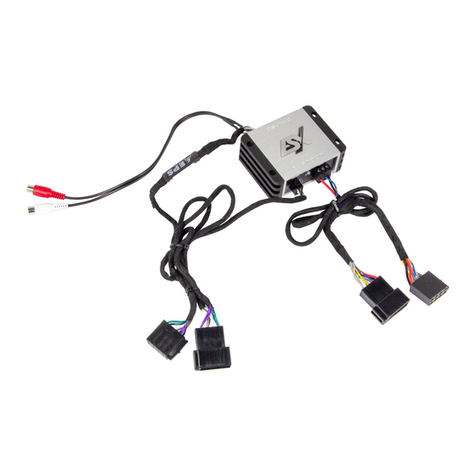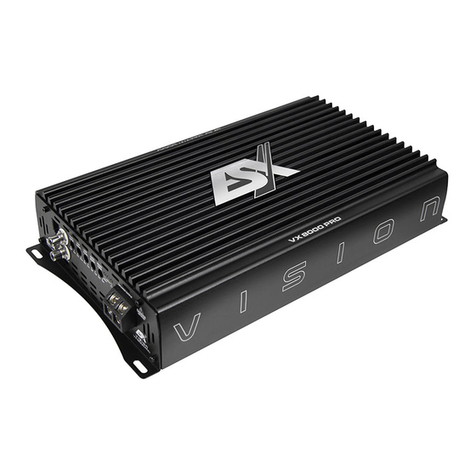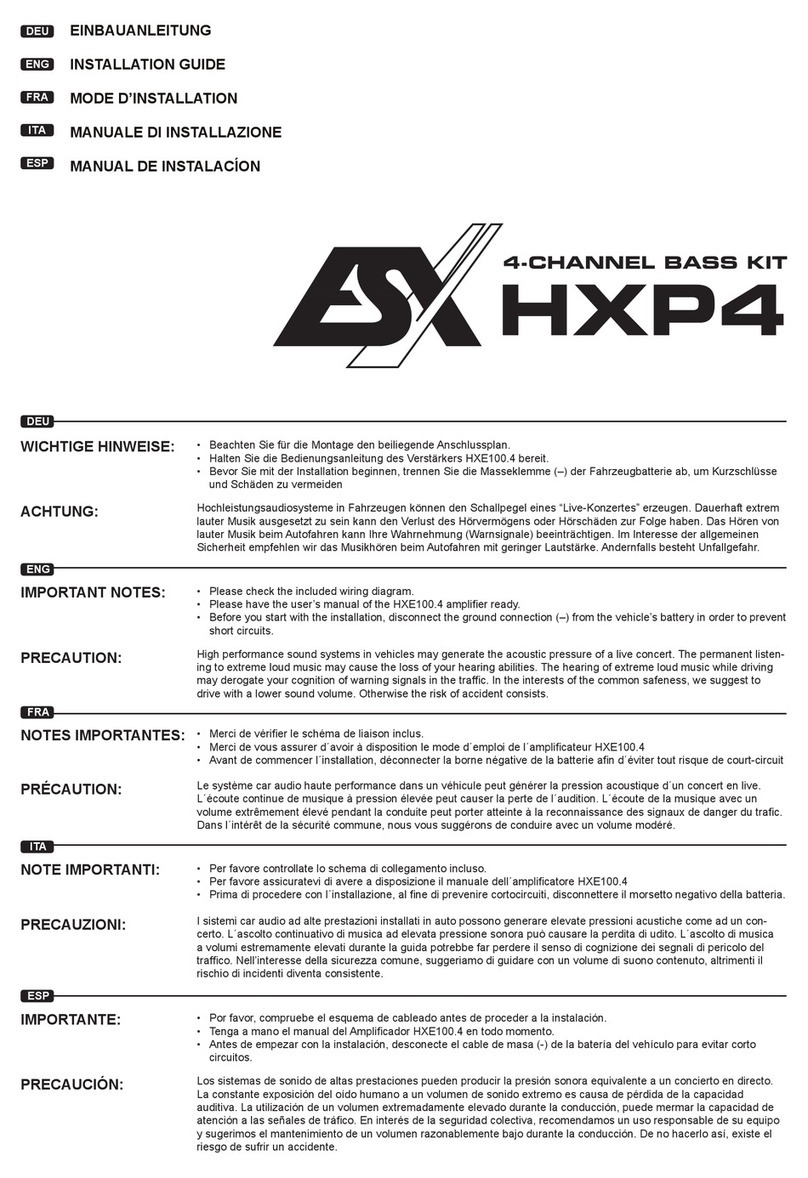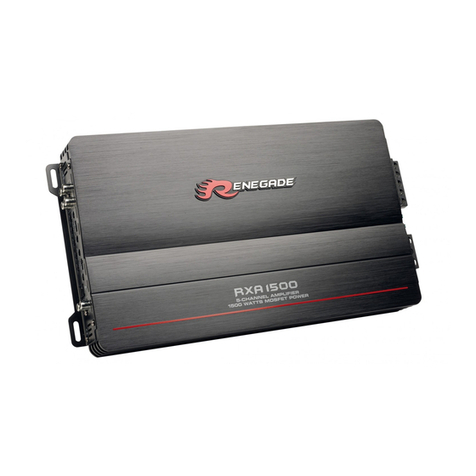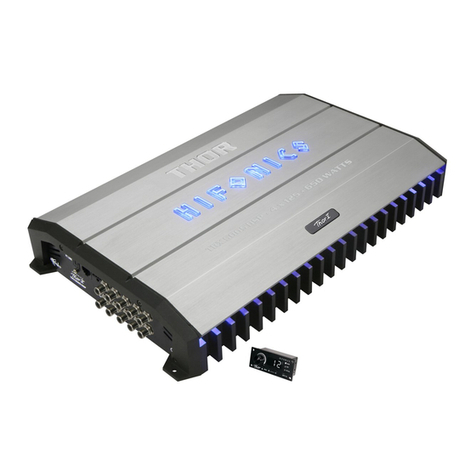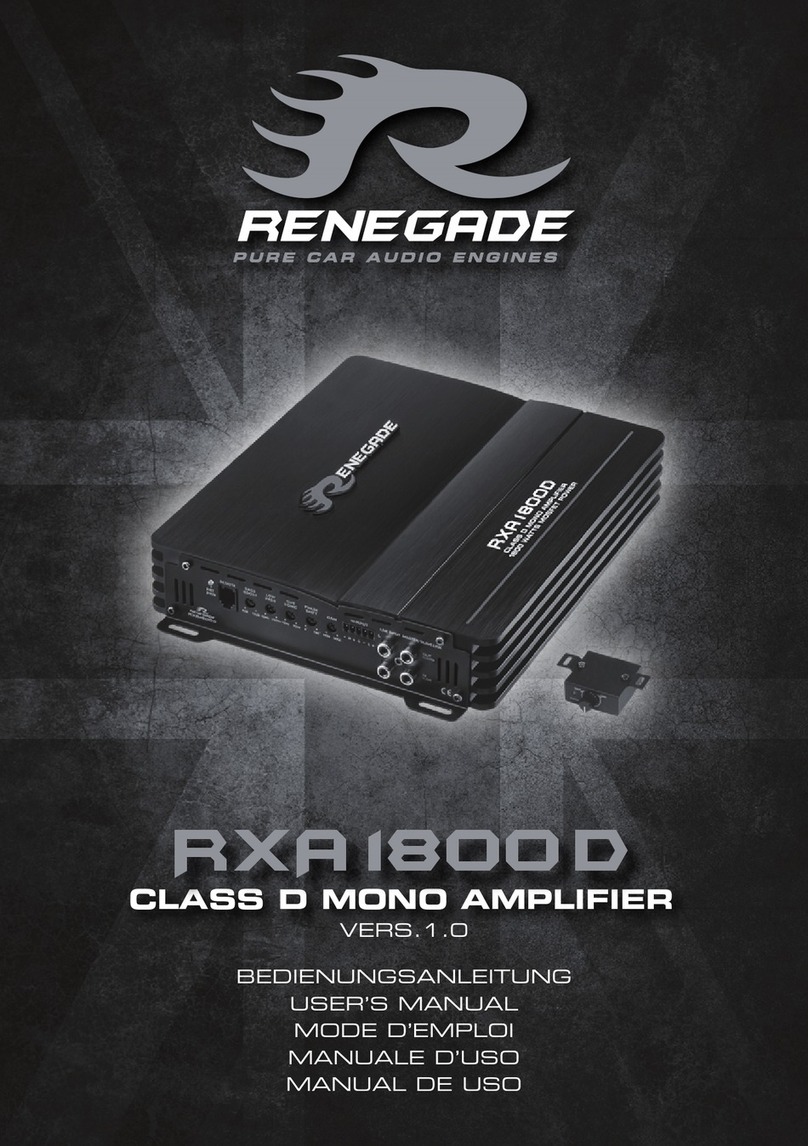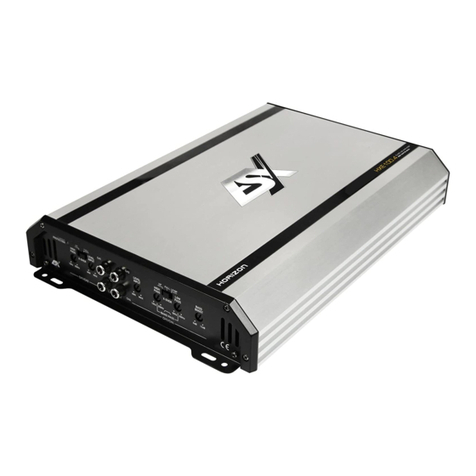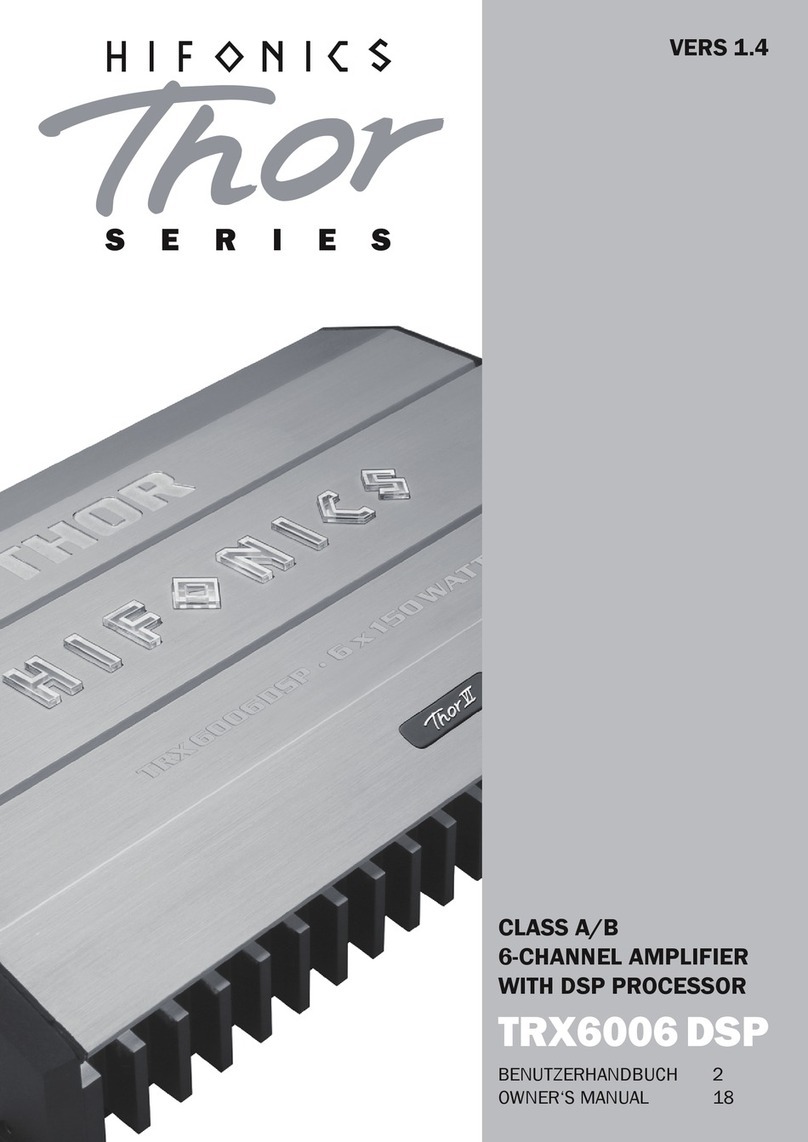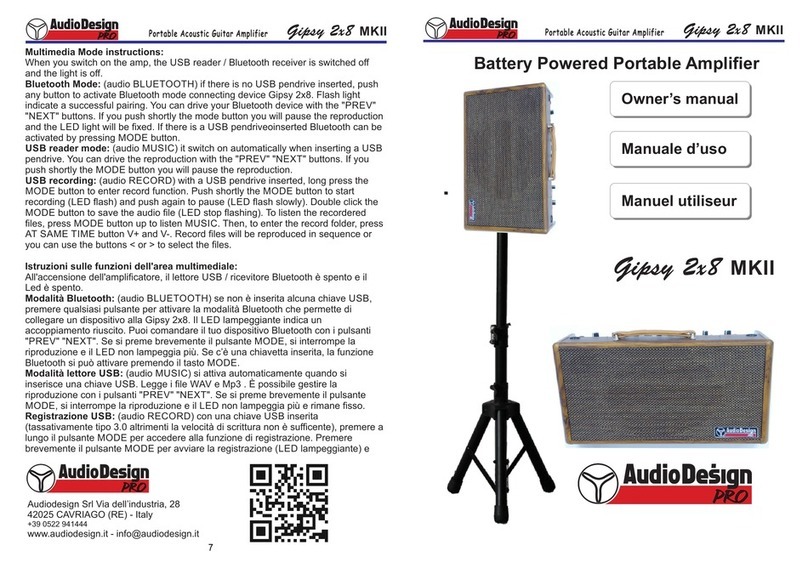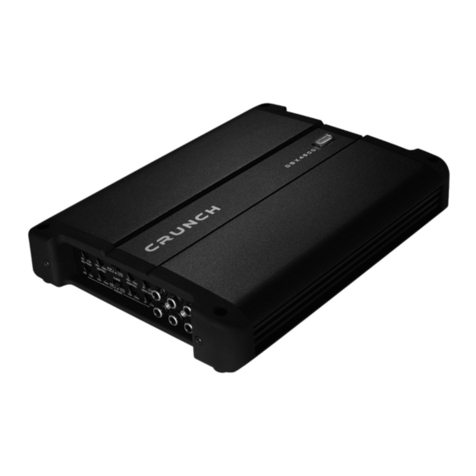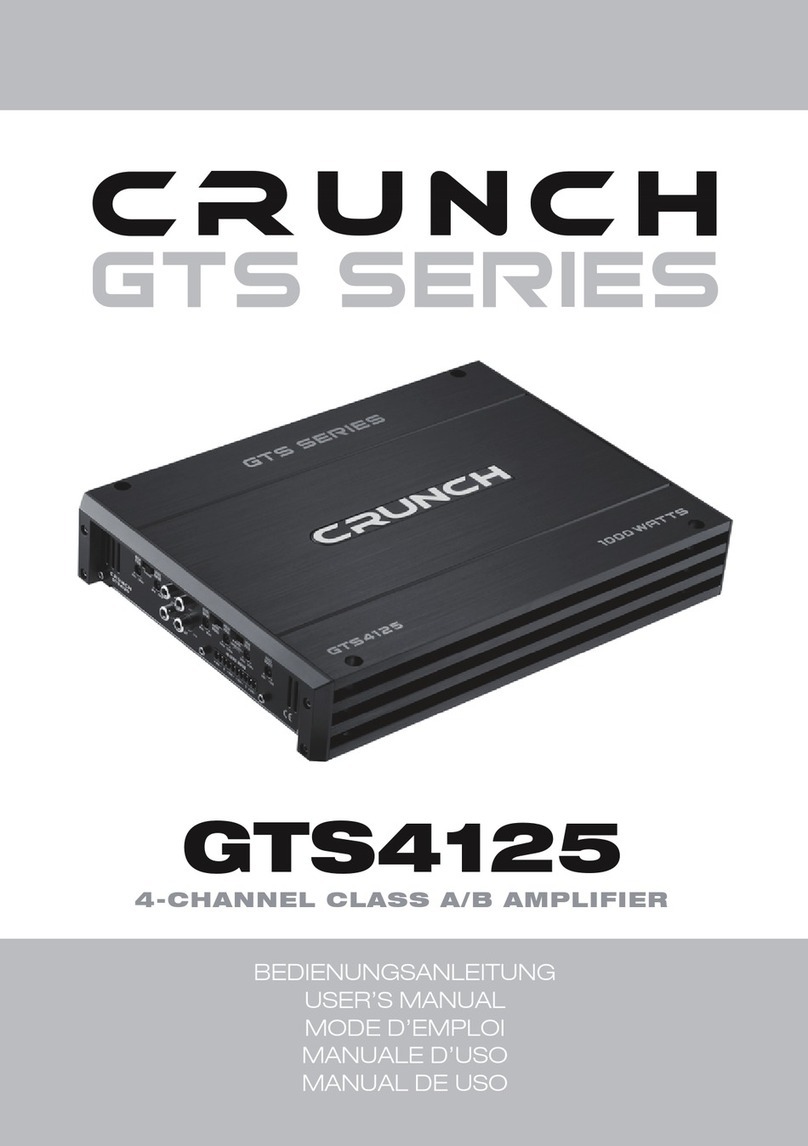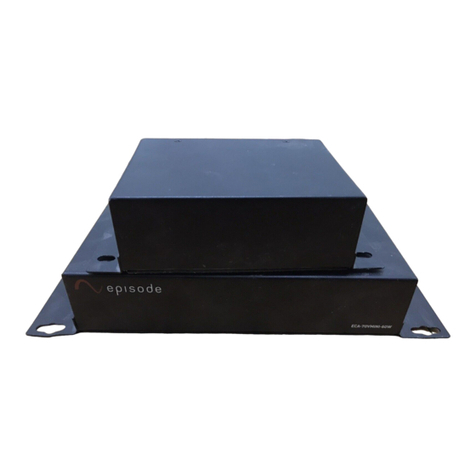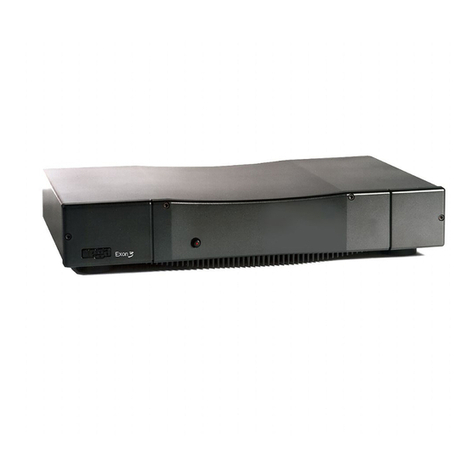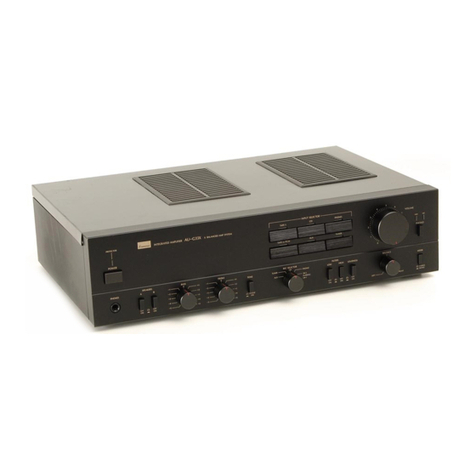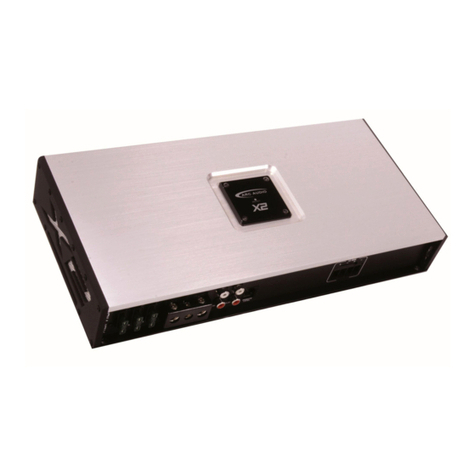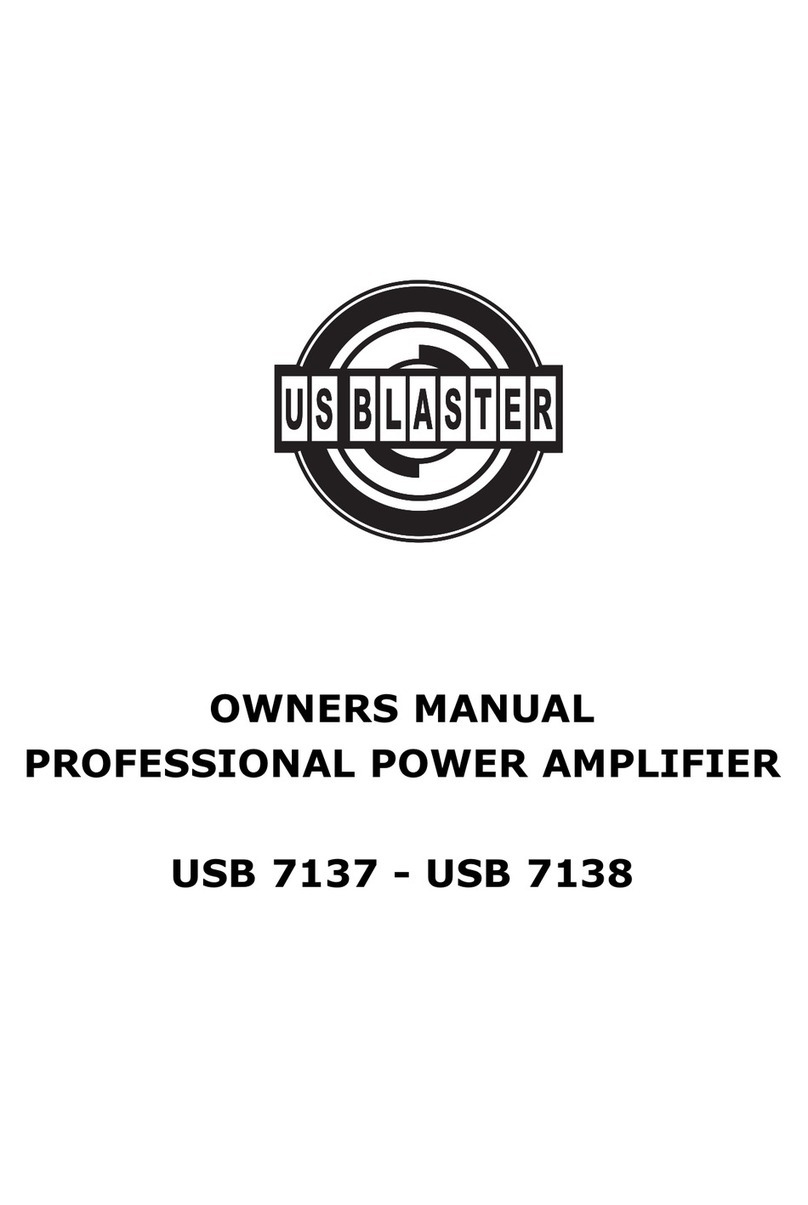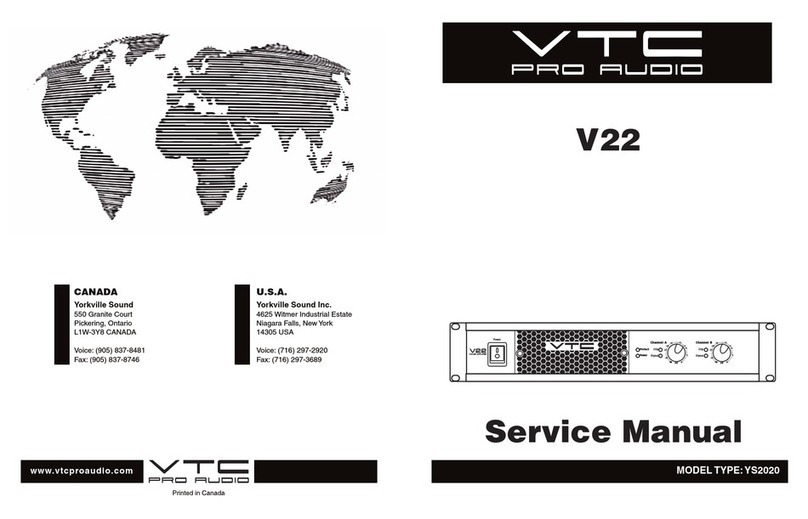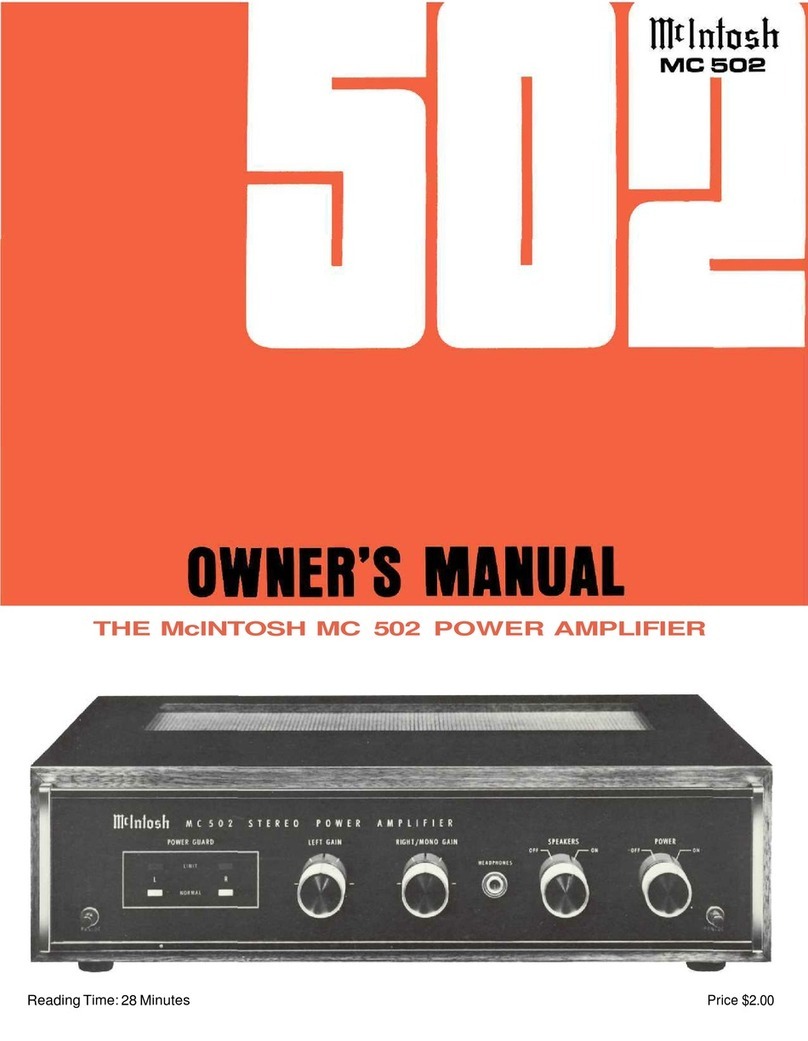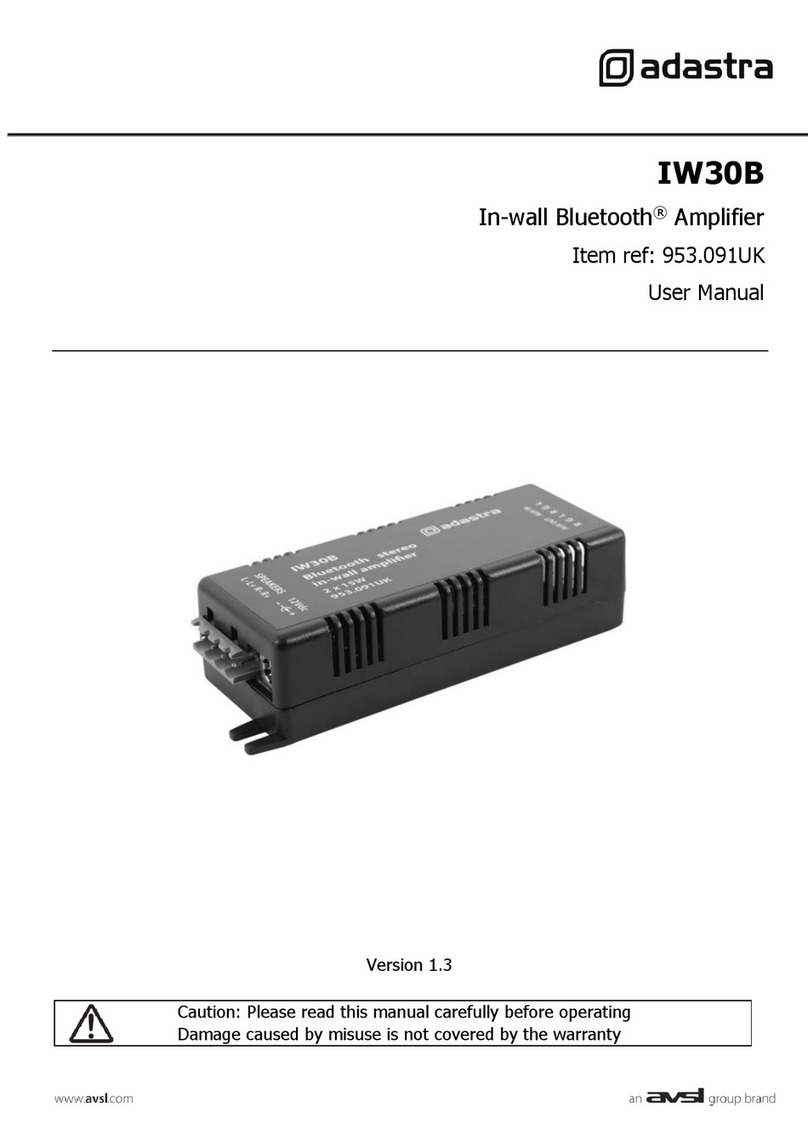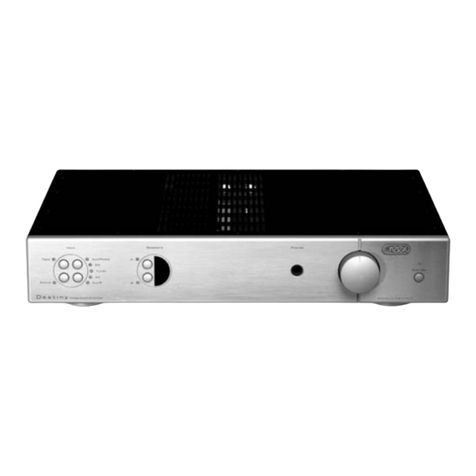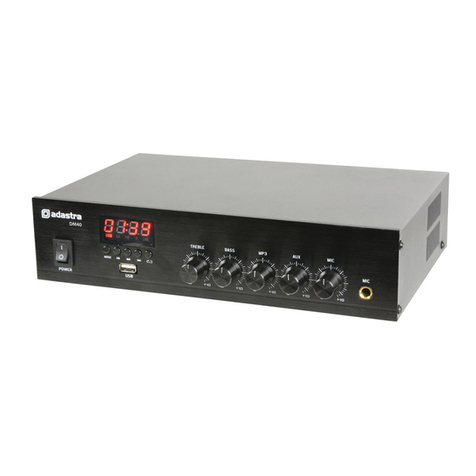
Circuit Operation______
Refer to the schematic diagram for the following description of the operation of the Ear+
HD. The left channel (top of the schematic) will be described. The right channel is
identical. The line inputs (J1) are directly coupled to the volume control potentiometer P1
which controls both channels. The wiper of P1a is directly coupled to the grid of tube
V1a, which is one of the two high mu triodes in the 5751/ECC83/12AX7 envelope (this
signal is also connected to the Passive Output jacks). V1a is designed as a common-
cathode voltage amplifier stage. A self-bias voltage of about –1 V is obtained from
resistor R2a with a plate current of 1 mA. The plate resistor R3a sets the plate voltage
(plate-to-cathode) to be approximately 98 V. The output signal of this stage (at the plate
of V1a) is direct coupled to the grid of the 12B4A tube, V2, which is configured as a
cathode-follower driver stage. The grid voltage of the 12B4A is set by the plate voltage
of V1a and the grid bias of about –15 V is obtained from the 7.5K cathode load resistor
R4a. The plate of V2 is connected directly to the high voltage supply, which provides a
plate voltage of approximately 83 V with a plate current of 15 mA.
The cathode-follower stage provides a low output resistance for driving the output
transformer. The low internal plate resistance of the 12B4A helps to make the resistance
looking back into the cathode quite low (approximately 500 Ohms). This low impedance
is the driving point for the primary of the output transformer TR3a. To reduce magnetic
saturation of the iron core, para (parallel)-feed is used so only the signal flows through
coupling capacitor C3a and to the primary of TR3a. The turns ratio of TR3a is
approximately 8.7:1, which reduces the output voltage swing available to drive the
headphones. However, it also provides an impedance transformation of 75:1, which
reduces the driving (output) impedance from 500 to less than 7 Ohms. The 8?secondary
of TR3a is directly coupled to the headphones jack J2H with the winding reversed to
provide a non-inverting signal path through the amplifier. The 4?secondary is connected
to J2L (low impedance).
The power supply (bottom of the schematic) provides the dc heater voltage and the plate
(B+) voltage for the three tubes. The 12 VDC output supplies the heaters of the two
12B4As and the 5751. The use of a dc heater supply ensures the absence of induced hum
throughout the signal portion of the circuit. The secondary of transformer TR1 is fed to
the full-wave bridge rectifier formed by diodes D1-D4. The output from the bridge
filtered by capacitors C5 and C6 together with resistor R5. The dc voltage at C6 feeds the
plates of the 12B4As while the plate supply for the input stage is further filtered by
resistor R6 and capacitor C7.
